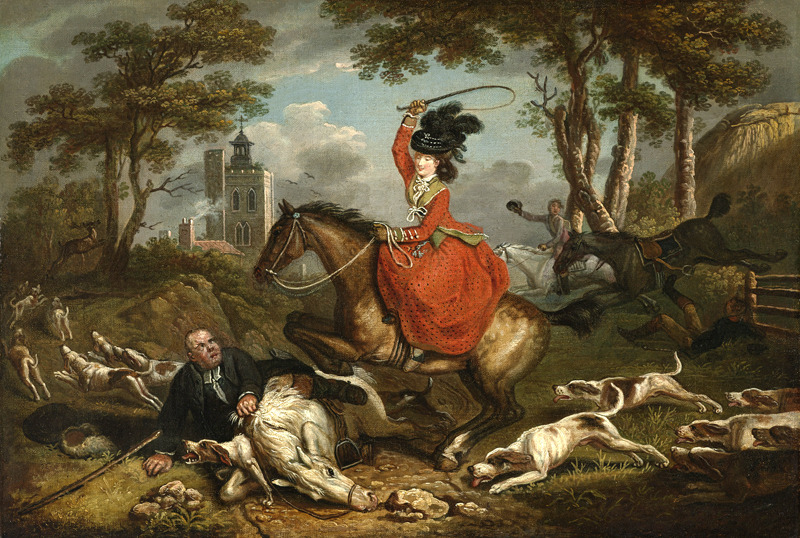
- Type: Art Audio File
- Collection: European Art
- Culture/Region: Europe
- Subject Area: Visual Arts
- Grade Level: 9-12, College, Adult
The appearance of a woman wearing a London riding habit in Kettering, Northhamptonshire, England, in July 1724 speaks to the shock of the “new woman” who bounds through John Collett’s painting:
“Yesterday a strange and surprising creature was seen to pass through our town on horseback. It had the face of a young woman, stuck full of patches; a perriwig which hung down to its waist; a hat cock’d with the smartness of a young officer; a huge bunch of ribbons fastened behind its left shoulder; a shirt laid in large pleights on the breasts and tied close at the neck and wrists, which, with a vest of white satteen, trimmed with black, had much the resemblance of a shroud.
Our whole town was soon alarmed with this strange appearance, and various are still the opinions what it really was. The old people, who were the most courageous generally, went pretty near to it with their spectacles on to view it more distinctly; the younger sort kept it at an awful distance. Some were of opinion that it was a highwayman in disguise, and accordingly were for seizing it; others took it for a nun; but by a certain arch leer it had with its eyes I dare engage it had not a bit of nun’s flesh about it. However, by its pale complexion and shroud-like dress, most of my neighbours at last concluded it to be a ghost, and so took to their heels, and left me (who am no great believer in these things) almost alone with it in the road.”
- from A history of English dress: from the Saxon period to the present day byGeorgiana Hill, G. P. Putnam’s sons. 1893, pg. 76.